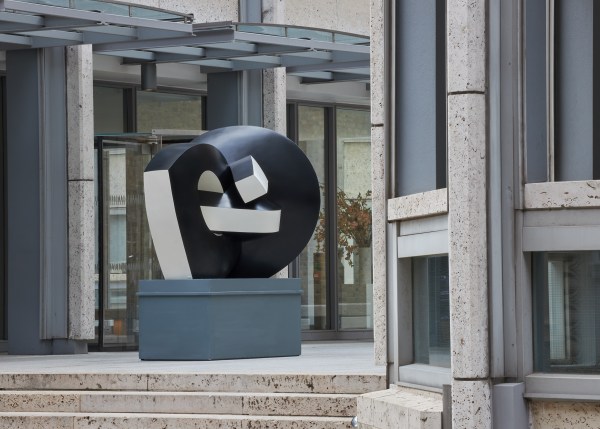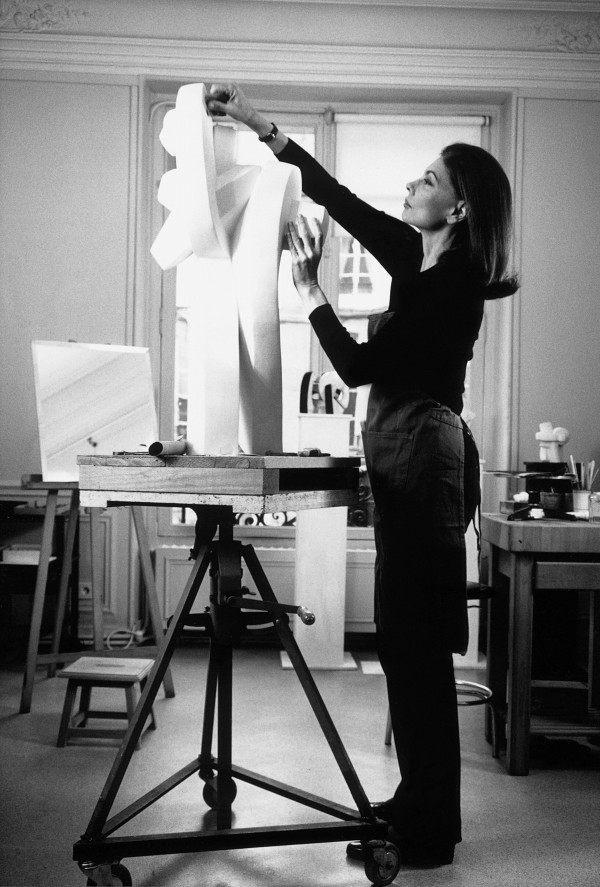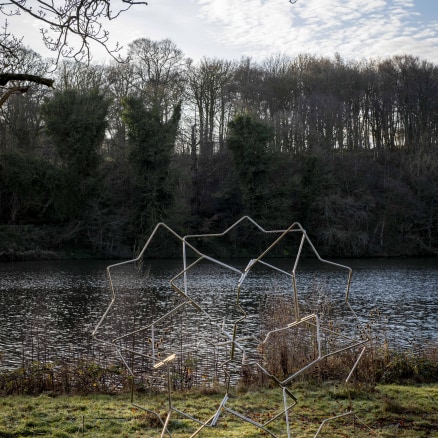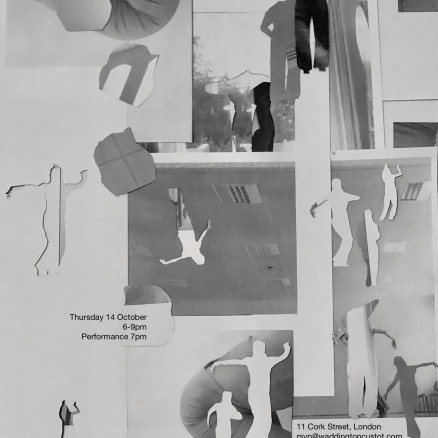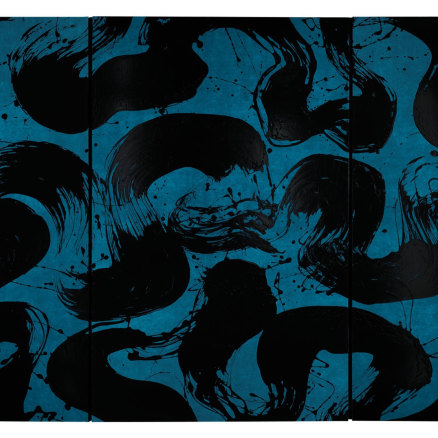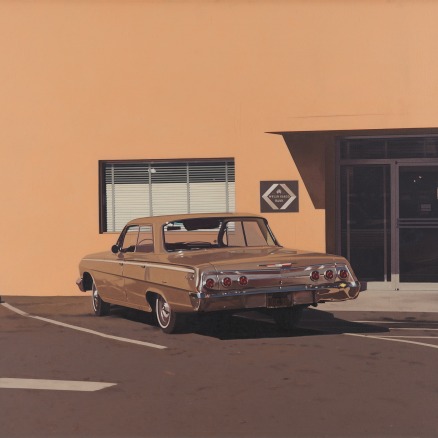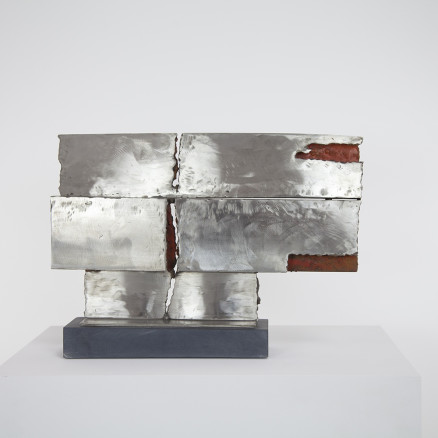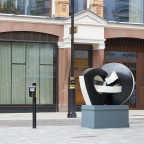Biography
Sophia Vari (b.1940, Athens, Greece; d.2023, Monte Carlo, Monaco) is celebrated for the distinct and coherent visual language through which she investigated abstract volume, form and balance. Working across sculpture, collage, oil and watercolour, Vari neatly navigated diverse influences, from Olmec and Cycladic artistic traditions to European Modernism, in her constant drive to express ‘beauty and harmony’.
Born in Athens to a Greek father and a Hungarian mother, Vari spent part of her childhood in Switzerland, later studying in England and then Paris, where she became acquainted with movements in modern art, namely Cubism and Surrealism. She graduated from the École des Beaux-Arts, Paris, in 1958 and made primarily figurative paintings throughout the 1960s and early 1970s. In the mid-1970s, Vari became interested in expressing her ideas in another medium and, during a trip to Egypt, came to understand the importance of monumental sculpture. After marrying internationally renowned Colombian painter and sculptor Fernando Botero in 1978, who had moved to Paris from New York in 1973, Vari started researching pre-Columbian art. Inspired by this indigenous art of the North, Central and South Americas, particularly the stylised forms of Olmec sculpture, Vari began to abstract her line, using spare rounded forms to suggest the human body. In 1992, she opened a studio in Paris where she made her own work and taught young artists. Continuing to explore abstraction, in the mid-1990s, Vari reached the zenith of her visual language, incorporating planar forms into her work and applying colour to the surfaces of her sculptures. This use of colour contributes to the dynamism of Vari’s pieces, and her sculptural works, created on a monumental scale and as table pieces, appear to move as the viewer walks around them.
Vari’s monumental sculptures have been publicly exhibited in cities worldwide, including Paris, Rome, Montecarlo, Baden-Baden, Geneva, Pietrasanta, Athens and Madrid. In 2022, three significant sculptures were displayed on the Smithson Plaza in London and more recently, from May–November 2023, 12 monumental pieces were exhibited along Park Avenue in New York. Vari is credited with having presented over 120 solo exhibitions during her career, including important institutional exhibitions at Palazzo Vecchio, Florence; Palazzo Bricherassio, Turin; The Ludwig Museum, Koblenz, France; and the Pera Museum in Istanbul. Vari’s work is included in international public collections, including museum Beelden aan Zee, The Hague; Benaki Museum, Athens; Fondation Veranneman, Kruishoutem, Belgium; Foundation Basil and Elise Goulandris: Museum of Modern Art, Andros, Greece; Fundaçao Calouste Gulbenkian, Lisbon; Fundación Botero, Biblioteca Luis Angel Arango, Bogota; Musée de la Main, Lausanne; Museo de Medellin, Medellin, Colombia; Museo de Ponce, Puerto Rico; National Museum and Alexandros Soultzos Museum, Athens; National Pinacotheca, Athens.
Read moreWorks
-
 Sophia Vari, Pleine Lune, 2022
marble
13 1/4 x 11 5/8 x 11 in
33.5 x 29.5 x 28 cm
%3Cdiv%20class%3D%22artist%22%3E%3Cspan%20class%3D%22artist%22%3E%3Cstrong%3ESophia%20Vari%3C/strong%3E%3C/span%3E%3C/div%3E%0D%3Cdiv%20class%3D%22title%22%3E%3Cem%3EPleine%20Lune%3C/em%3E%2C%202022%3C/div%3E%0D%3Cdiv%20class%3D%22medium%22%3Emarble%3Cbr%20/%3E%0A%3C/div%3E%0D%3Cdiv%20class%3D%22dimensions%22%3E13%201/4%20x%2011%205/8%20x%2011%20in%3Cbr%20/%3E%0A33.5%20x%2029.5%20x%2028%20cm%3C/div%3E
Sophia Vari, Pleine Lune, 2022
marble
13 1/4 x 11 5/8 x 11 in
33.5 x 29.5 x 28 cm
%3Cdiv%20class%3D%22artist%22%3E%3Cspan%20class%3D%22artist%22%3E%3Cstrong%3ESophia%20Vari%3C/strong%3E%3C/span%3E%3C/div%3E%0D%3Cdiv%20class%3D%22title%22%3E%3Cem%3EPleine%20Lune%3C/em%3E%2C%202022%3C/div%3E%0D%3Cdiv%20class%3D%22medium%22%3Emarble%3Cbr%20/%3E%0A%3C/div%3E%0D%3Cdiv%20class%3D%22dimensions%22%3E13%201/4%20x%2011%205/8%20x%2011%20in%3Cbr%20/%3E%0A33.5%20x%2029.5%20x%2028%20cm%3C/div%3E -
 Sophia Vari, Constellation, 2021
marble
29.5 x 28 x 22 cm
Sophia Vari, Constellation, 2021
marble
29.5 x 28 x 22 cm
-
 Sophia Vari, Pas de Danse, 2016
silver
11 7/8 x 5 1/8 x 5 1/8 in
30 x 13 x 13 cm
%3Cdiv%20class%3D%22artist%22%3E%3Cspan%20class%3D%22artist%22%3E%3Cstrong%3ESophia%20Vari%3C/strong%3E%3C/span%3E%3C/div%3E%0D%3Cdiv%20class%3D%22title%22%3E%3Cem%3EPas%20de%20Danse%3C/em%3E%2C%202016%3C/div%3E%0D%3Cdiv%20class%3D%22medium%22%3Esilver%3C/div%3E%0D%3Cdiv%20class%3D%22dimensions%22%3E11%207/8%20x%205%201/8%20x%205%201/8%20in%20%3Cbr%20/%3E%0A30%20x%2013%20x%2013%20cm%3C/div%3E%0D%3Cdiv%20class%3D%22edition_details%22%3Ecast%20number%202%20from%20an%20edition%20of%206%20plus%202%20APs%3C/div%3E
Sophia Vari, Pas de Danse, 2016
silver
11 7/8 x 5 1/8 x 5 1/8 in
30 x 13 x 13 cm
%3Cdiv%20class%3D%22artist%22%3E%3Cspan%20class%3D%22artist%22%3E%3Cstrong%3ESophia%20Vari%3C/strong%3E%3C/span%3E%3C/div%3E%0D%3Cdiv%20class%3D%22title%22%3E%3Cem%3EPas%20de%20Danse%3C/em%3E%2C%202016%3C/div%3E%0D%3Cdiv%20class%3D%22medium%22%3Esilver%3C/div%3E%0D%3Cdiv%20class%3D%22dimensions%22%3E11%207/8%20x%205%201/8%20x%205%201/8%20in%20%3Cbr%20/%3E%0A30%20x%2013%20x%2013%20cm%3C/div%3E%0D%3Cdiv%20class%3D%22edition_details%22%3Ecast%20number%202%20from%20an%20edition%20of%206%20plus%202%20APs%3C/div%3E -
 Sophia Vari, Continuité, 2006
bronze
42.5 x 39 x 36 cm
Sophia Vari, Continuité, 2006
bronze
42.5 x 39 x 36 cm
-
 Sophia Vari, Trouble essentiel, 2005
marble
46 x 66 x 44 cm
Sophia Vari, Trouble essentiel, 2005
marble
46 x 66 x 44 cm
-
 Sophia Vari, La Reine, 2000
bronze polychrome black and white
118 1/8 x 54 3/8 x 35 1/2 in
300 x 138 x 90 cm
%3Cdiv%20class%3D%22artist%22%3E%3Cspan%20class%3D%22artist%22%3E%3Cstrong%3ESophia%20Vari%3C/strong%3E%3C/span%3E%3C/div%3E%0D%3Cdiv%20class%3D%22title%22%3E%3Cem%3ELa%20Reine%3C/em%3E%2C%202000%3C/div%3E%0D%3Cdiv%20class%3D%22medium%22%3Ebronze%20polychrome%20black%20and%20white%3C/div%3E%0D%3Cdiv%20class%3D%22dimensions%22%3E118%201/8%20x%2054%203/8%20x%2035%201/2%20in%3Cbr%20/%3E%0A300%20x%20138%20x%2090%20cm%3C/div%3E
Sophia Vari, La Reine, 2000
bronze polychrome black and white
118 1/8 x 54 3/8 x 35 1/2 in
300 x 138 x 90 cm
%3Cdiv%20class%3D%22artist%22%3E%3Cspan%20class%3D%22artist%22%3E%3Cstrong%3ESophia%20Vari%3C/strong%3E%3C/span%3E%3C/div%3E%0D%3Cdiv%20class%3D%22title%22%3E%3Cem%3ELa%20Reine%3C/em%3E%2C%202000%3C/div%3E%0D%3Cdiv%20class%3D%22medium%22%3Ebronze%20polychrome%20black%20and%20white%3C/div%3E%0D%3Cdiv%20class%3D%22dimensions%22%3E118%201/8%20x%2054%203/8%20x%2035%201/2%20in%3Cbr%20/%3E%0A300%20x%20138%20x%2090%20cm%3C/div%3E -
 Sophia Vari, Le Roi, 2000
bronze polychrome black and white
122 x 55 7/8 x 38 5/8 in
310 x 142 x 98 cm
%3Cdiv%20class%3D%22artist%22%3E%3Cspan%20class%3D%22artist%22%3E%3Cstrong%3ESophia%20Vari%3C/strong%3E%3C/span%3E%3C/div%3E%0D%3Cdiv%20class%3D%22title%22%3E%3Cem%3ELe%20Roi%3C/em%3E%2C%202000%3C/div%3E%0D%3Cdiv%20class%3D%22medium%22%3Ebronze%20polychrome%20black%20and%20white%3C/div%3E%0D%3Cdiv%20class%3D%22dimensions%22%3E122%20x%2055%207/8%20x%2038%205/8%20in%3Cbr%20/%3E%0A310%20x%20142%20x%2098%20cm%3C/div%3E
Sophia Vari, Le Roi, 2000
bronze polychrome black and white
122 x 55 7/8 x 38 5/8 in
310 x 142 x 98 cm
%3Cdiv%20class%3D%22artist%22%3E%3Cspan%20class%3D%22artist%22%3E%3Cstrong%3ESophia%20Vari%3C/strong%3E%3C/span%3E%3C/div%3E%0D%3Cdiv%20class%3D%22title%22%3E%3Cem%3ELe%20Roi%3C/em%3E%2C%202000%3C/div%3E%0D%3Cdiv%20class%3D%22medium%22%3Ebronze%20polychrome%20black%20and%20white%3C/div%3E%0D%3Cdiv%20class%3D%22dimensions%22%3E122%20x%2055%207/8%20x%2038%205/8%20in%3Cbr%20/%3E%0A310%20x%20142%20x%2098%20cm%3C/div%3E -
 Sophia Vari, Trouble Essentiel, 1993
bronze
55 1/8 x 72 1/2 x 47 1/4 in
140 x 168 x 120 cm
%3Cdiv%20class%3D%22artist%22%3E%3Cspan%20class%3D%22artist%22%3E%3Cstrong%3ESophia%20Vari%3C/strong%3E%3C/span%3E%3C/div%3E%0D%3Cdiv%20class%3D%22title%22%3E%3Cem%3ETrouble%20Essentiel%3C/em%3E%2C%201993%3C/div%3E%0D%3Cdiv%20class%3D%22signed_and_dated%22%3Ecast%20number%202%20from%20an%20edition%20of%203%20plus%202%20APs%3C/div%3E%0D%3Cdiv%20class%3D%22medium%22%3Ebronze%3Cbr%20/%3E%0A%3C/div%3E%0D%3Cdiv%20class%3D%22dimensions%22%3E55%201/8%20x%2072%201/2%20x%2047%201/4%20in%3Cbr%20/%3E%0A140%20x%20168%20x%20120%20cm%3C/div%3E
Sophia Vari, Trouble Essentiel, 1993
bronze
55 1/8 x 72 1/2 x 47 1/4 in
140 x 168 x 120 cm
%3Cdiv%20class%3D%22artist%22%3E%3Cspan%20class%3D%22artist%22%3E%3Cstrong%3ESophia%20Vari%3C/strong%3E%3C/span%3E%3C/div%3E%0D%3Cdiv%20class%3D%22title%22%3E%3Cem%3ETrouble%20Essentiel%3C/em%3E%2C%201993%3C/div%3E%0D%3Cdiv%20class%3D%22signed_and_dated%22%3Ecast%20number%202%20from%20an%20edition%20of%203%20plus%202%20APs%3C/div%3E%0D%3Cdiv%20class%3D%22medium%22%3Ebronze%3Cbr%20/%3E%0A%3C/div%3E%0D%3Cdiv%20class%3D%22dimensions%22%3E55%201/8%20x%2072%201/2%20x%2047%201/4%20in%3Cbr%20/%3E%0A140%20x%20168%20x%20120%20cm%3C/div%3E -
 Sophia Vari
artist at her work in her atelier, 2016
Sophia Vari
artist at her work in her atelier, 2016
-
 Sophia Vari, artist in her studio
Courtesy the artist.
Sophia Vari, artist in her studio
Courtesy the artist.
Latest
















